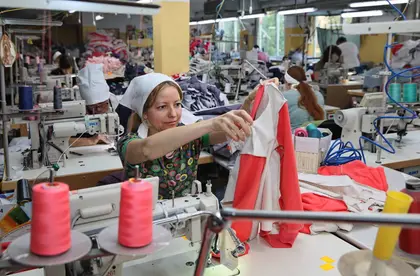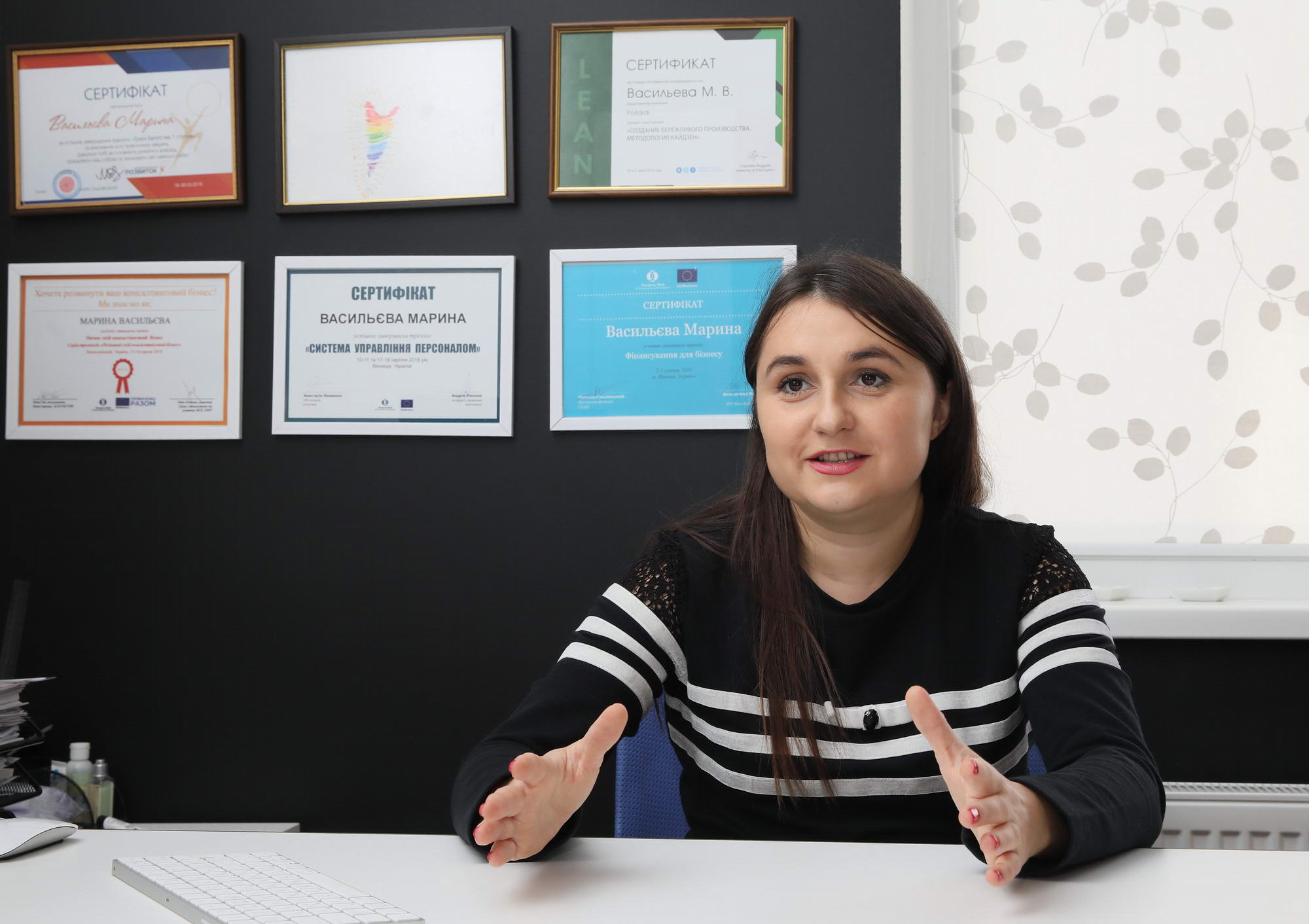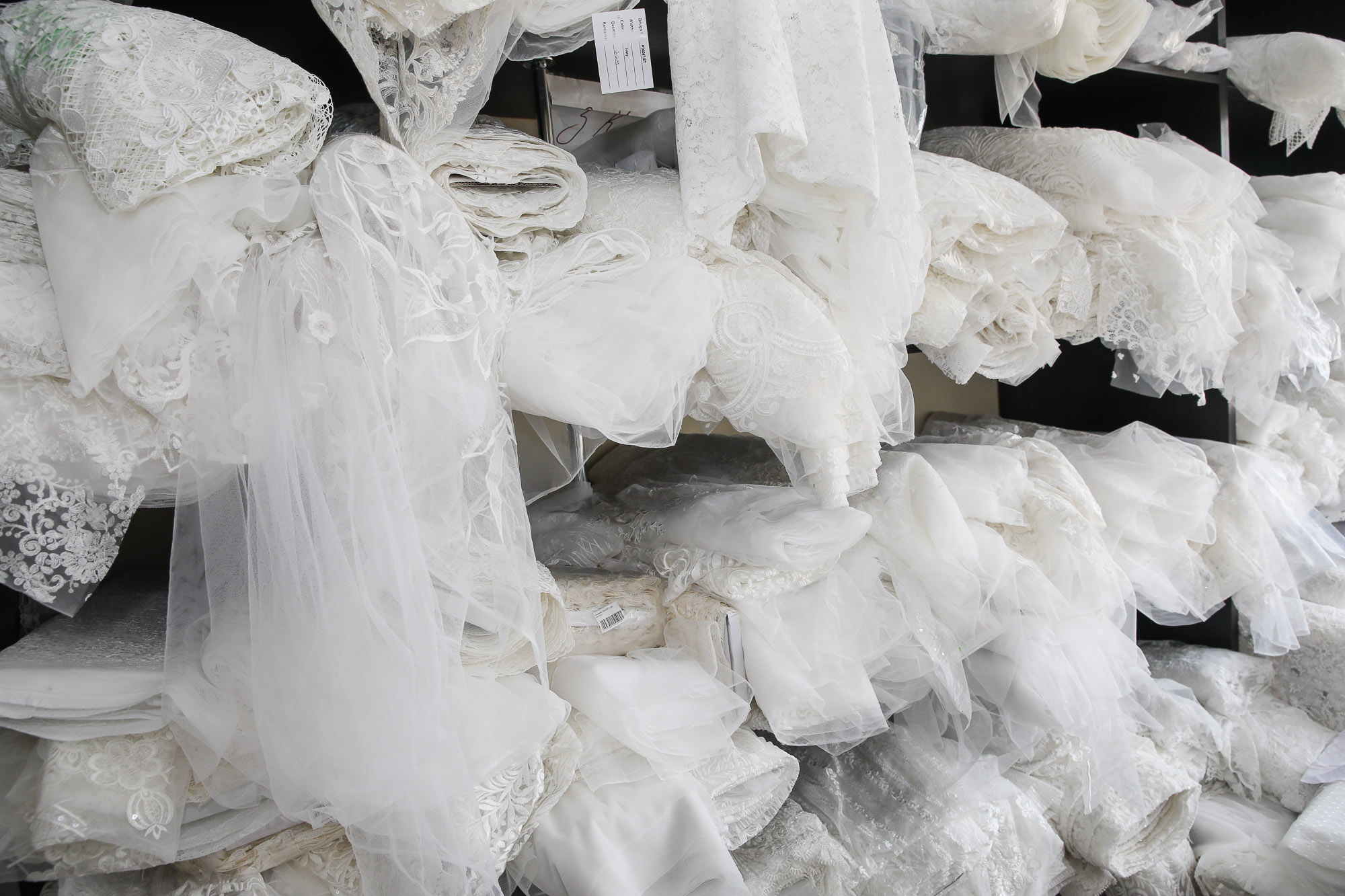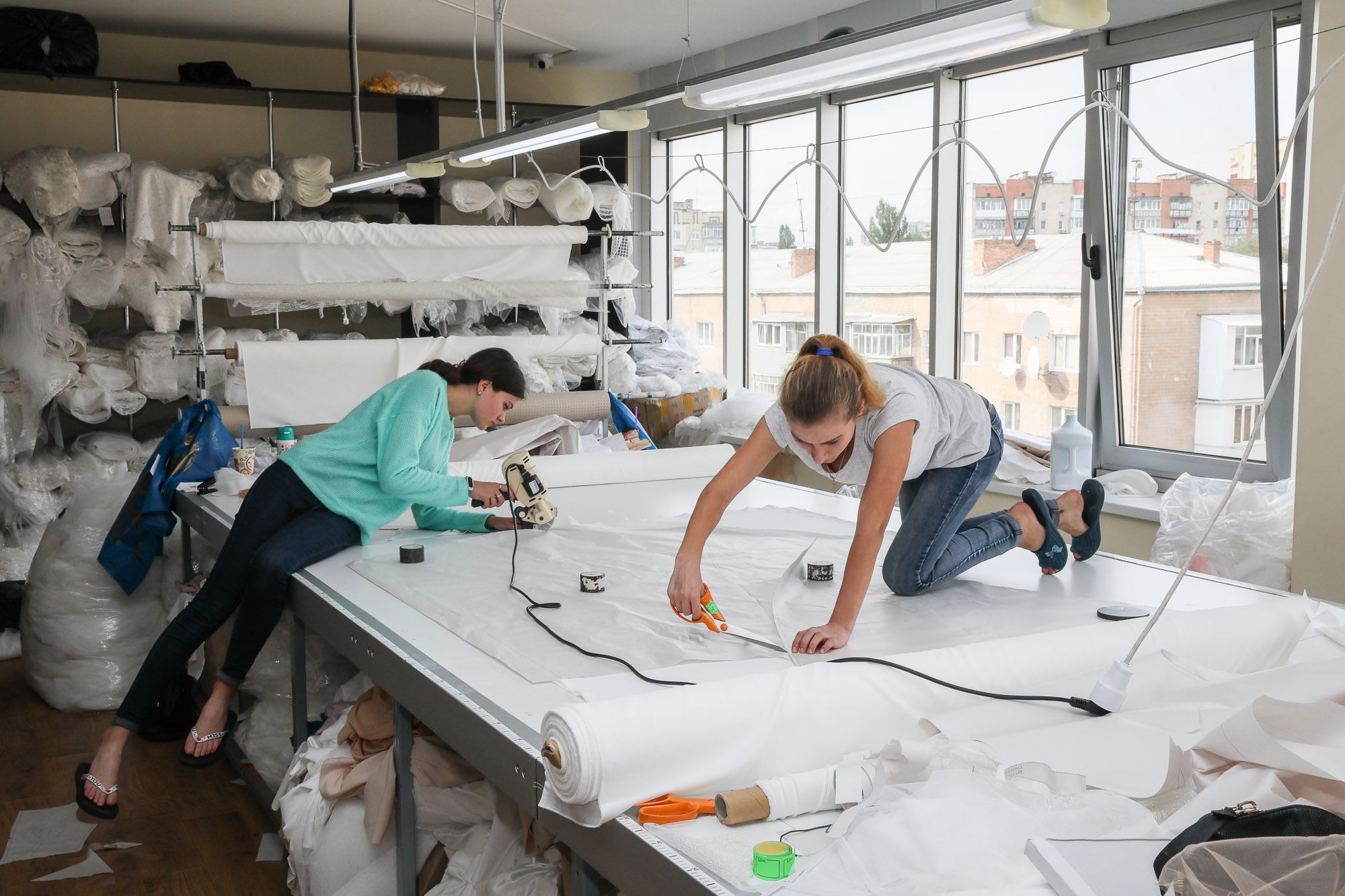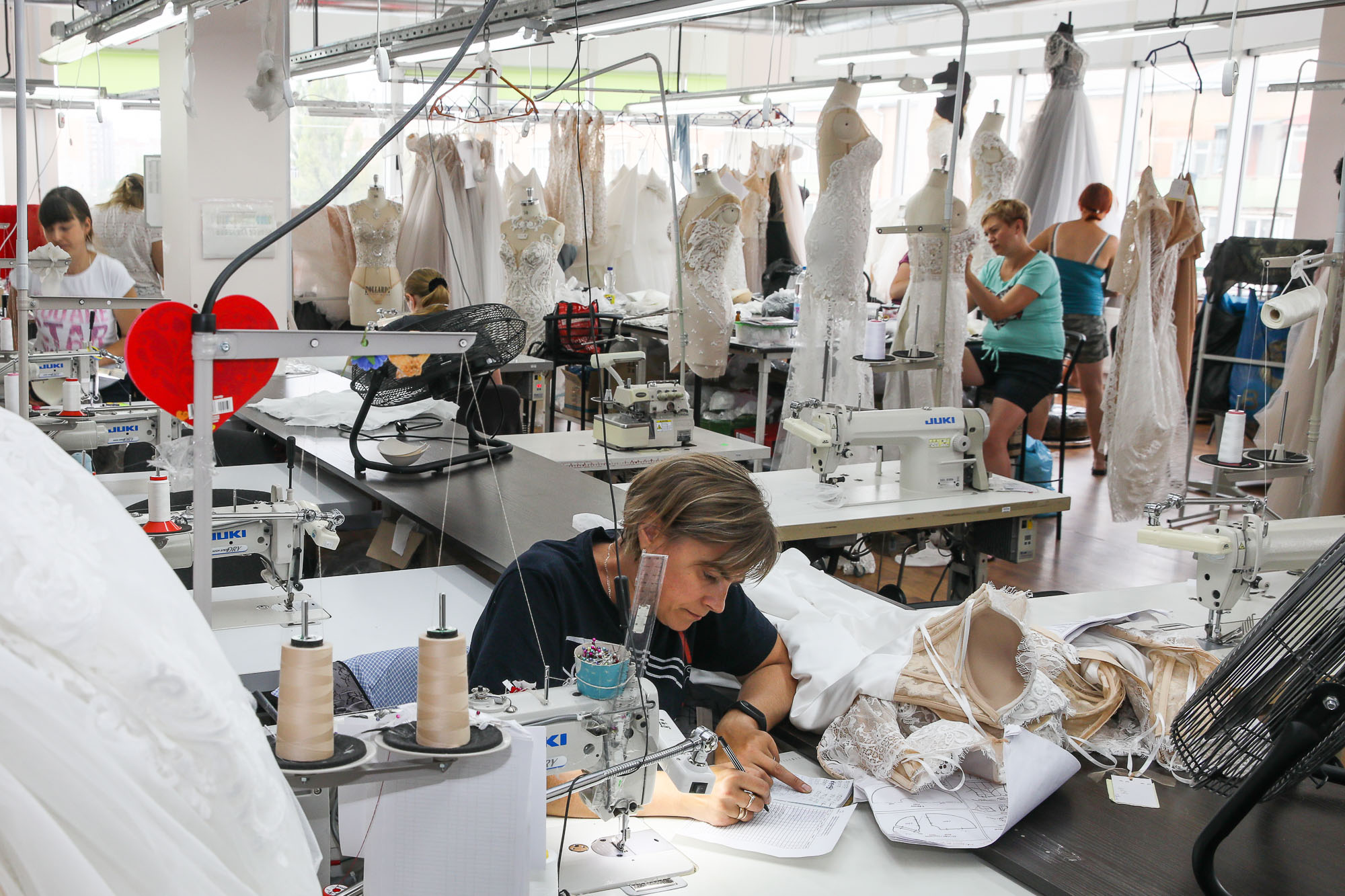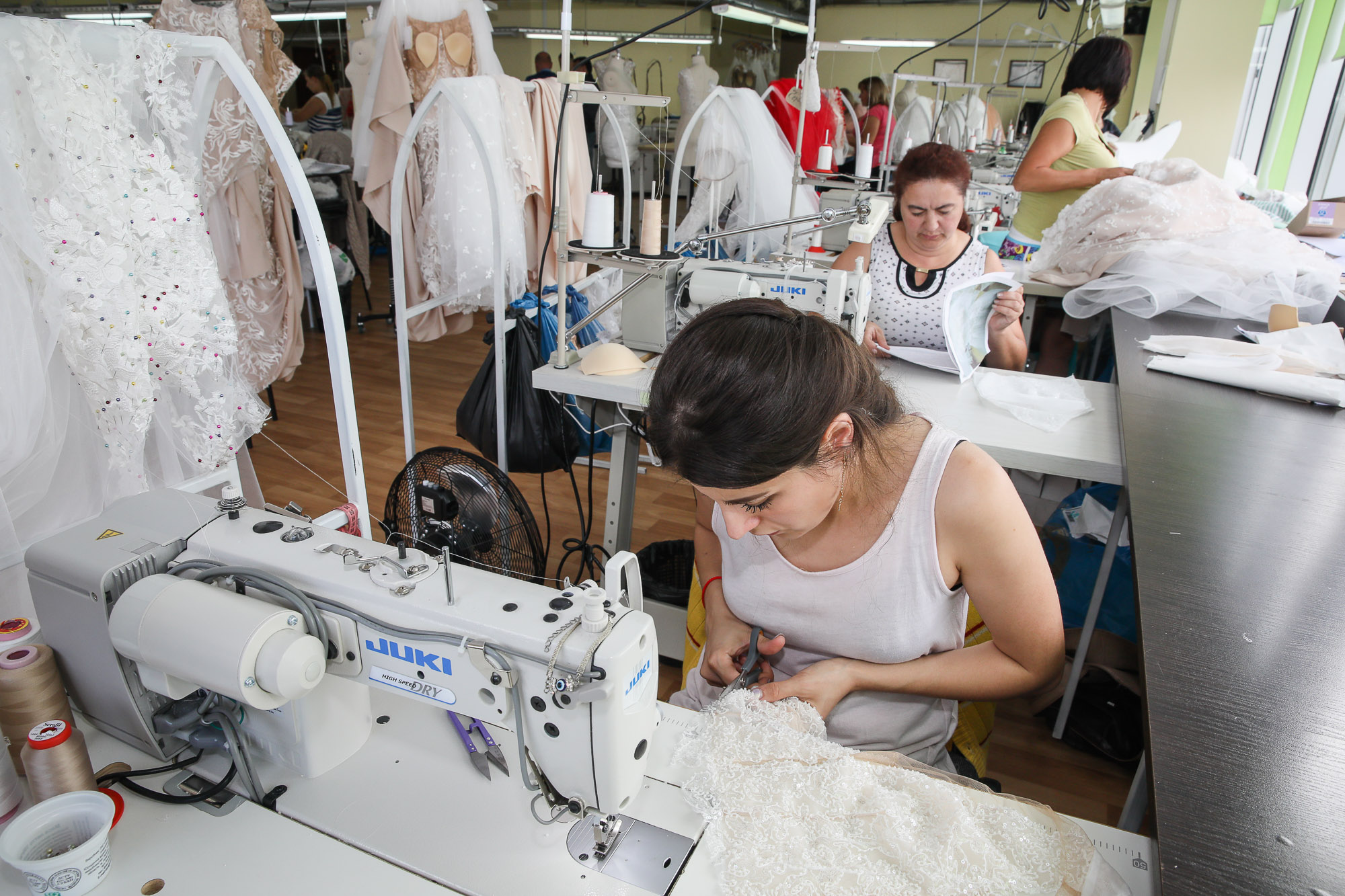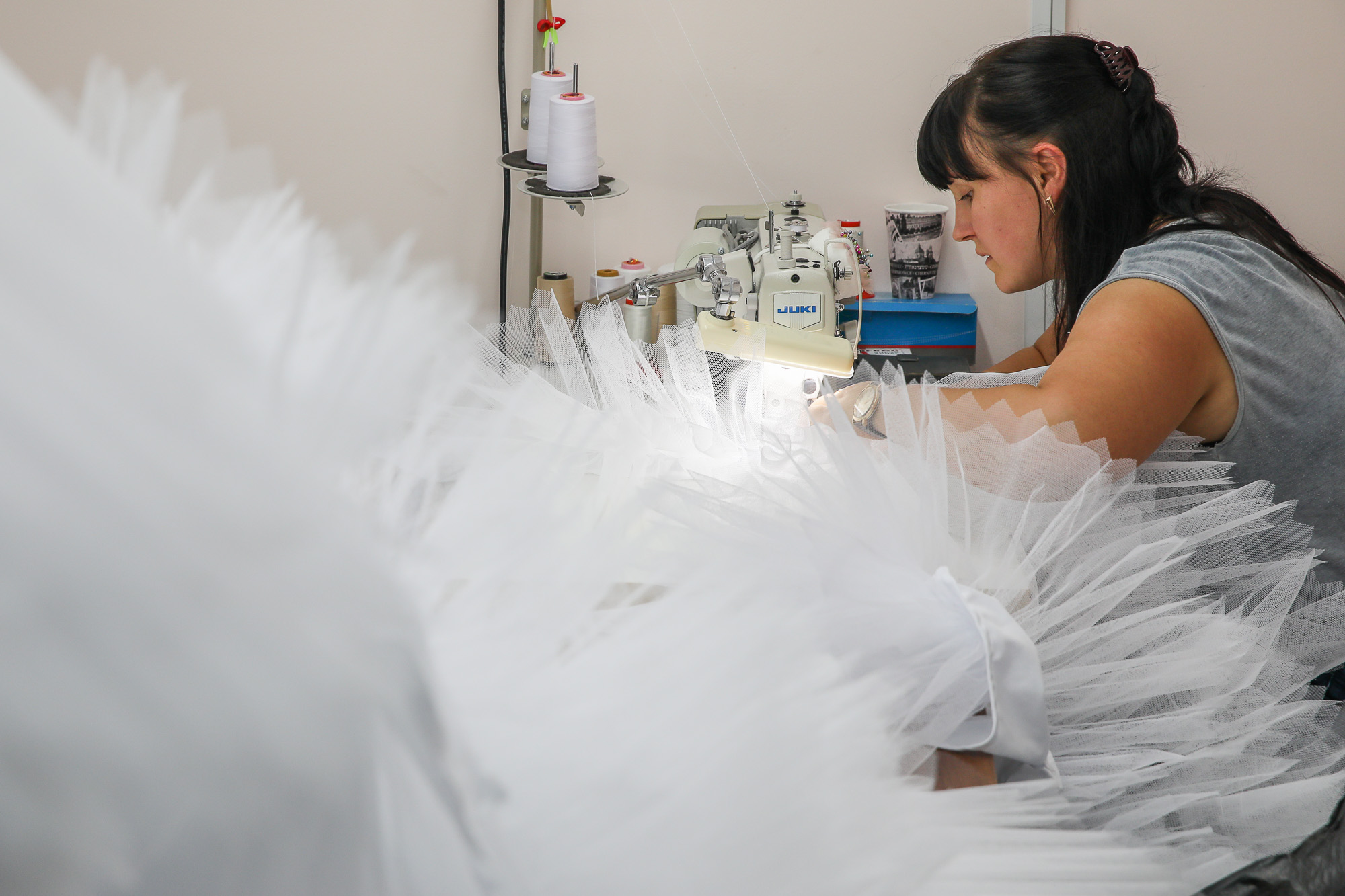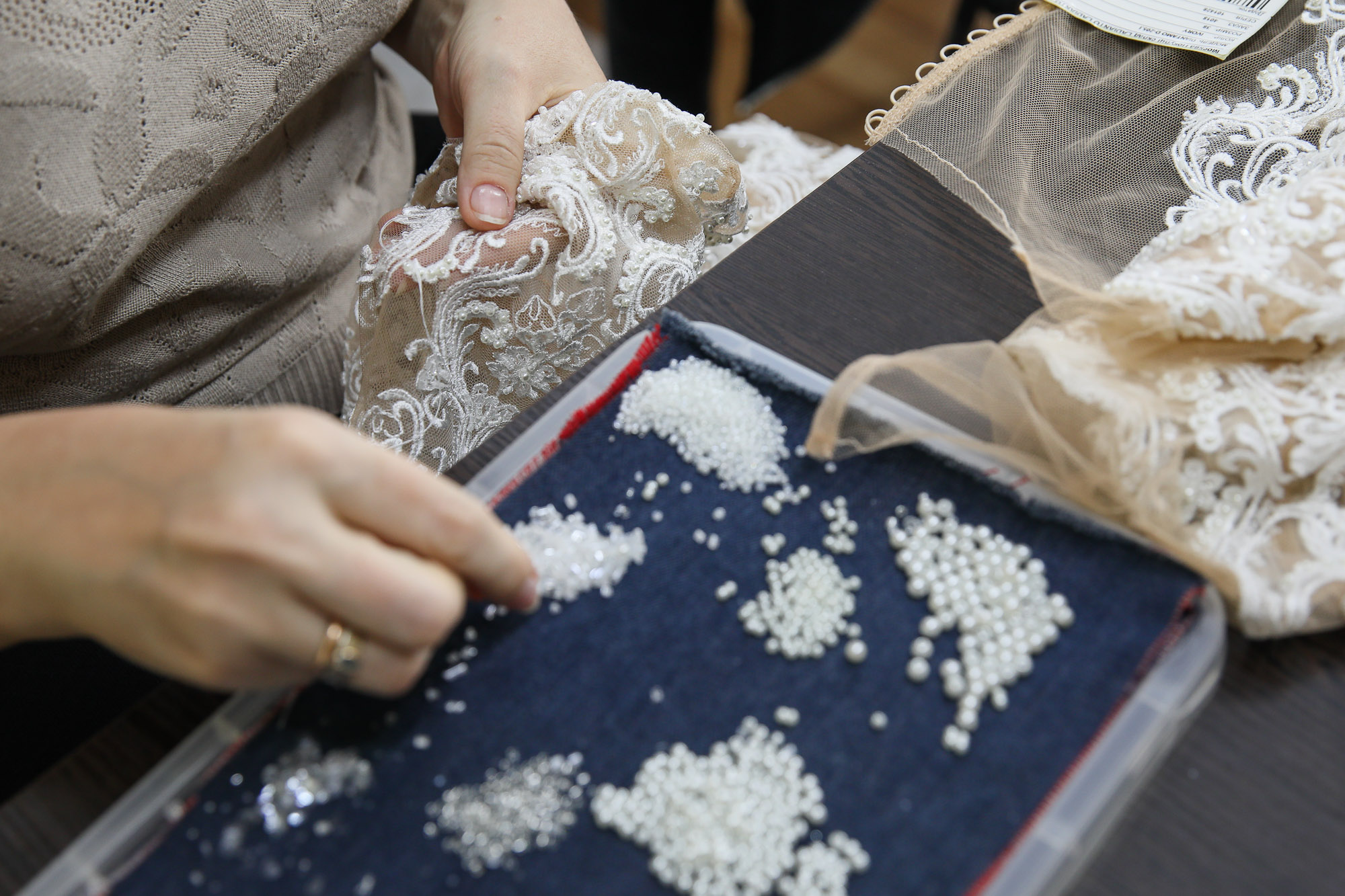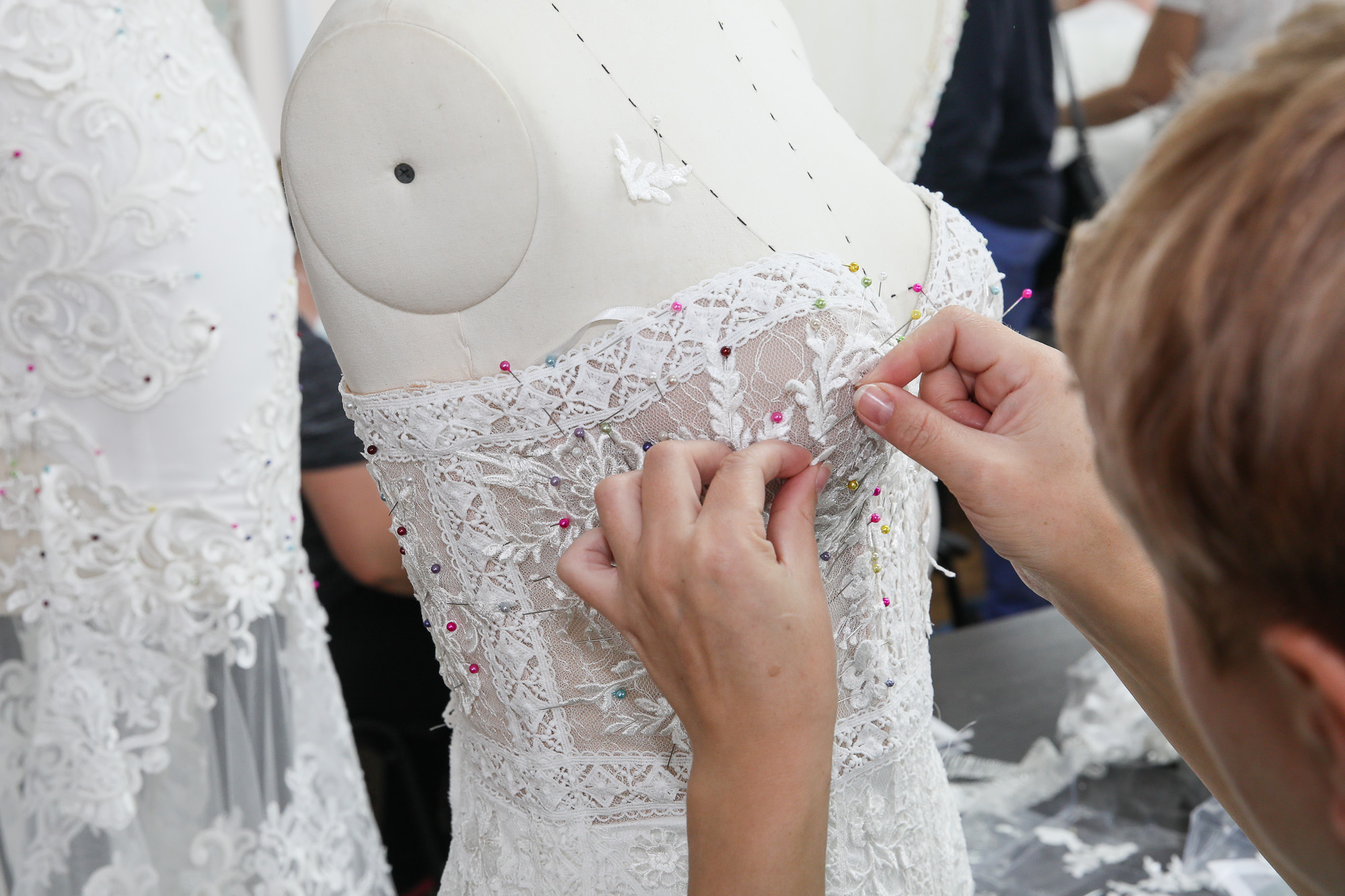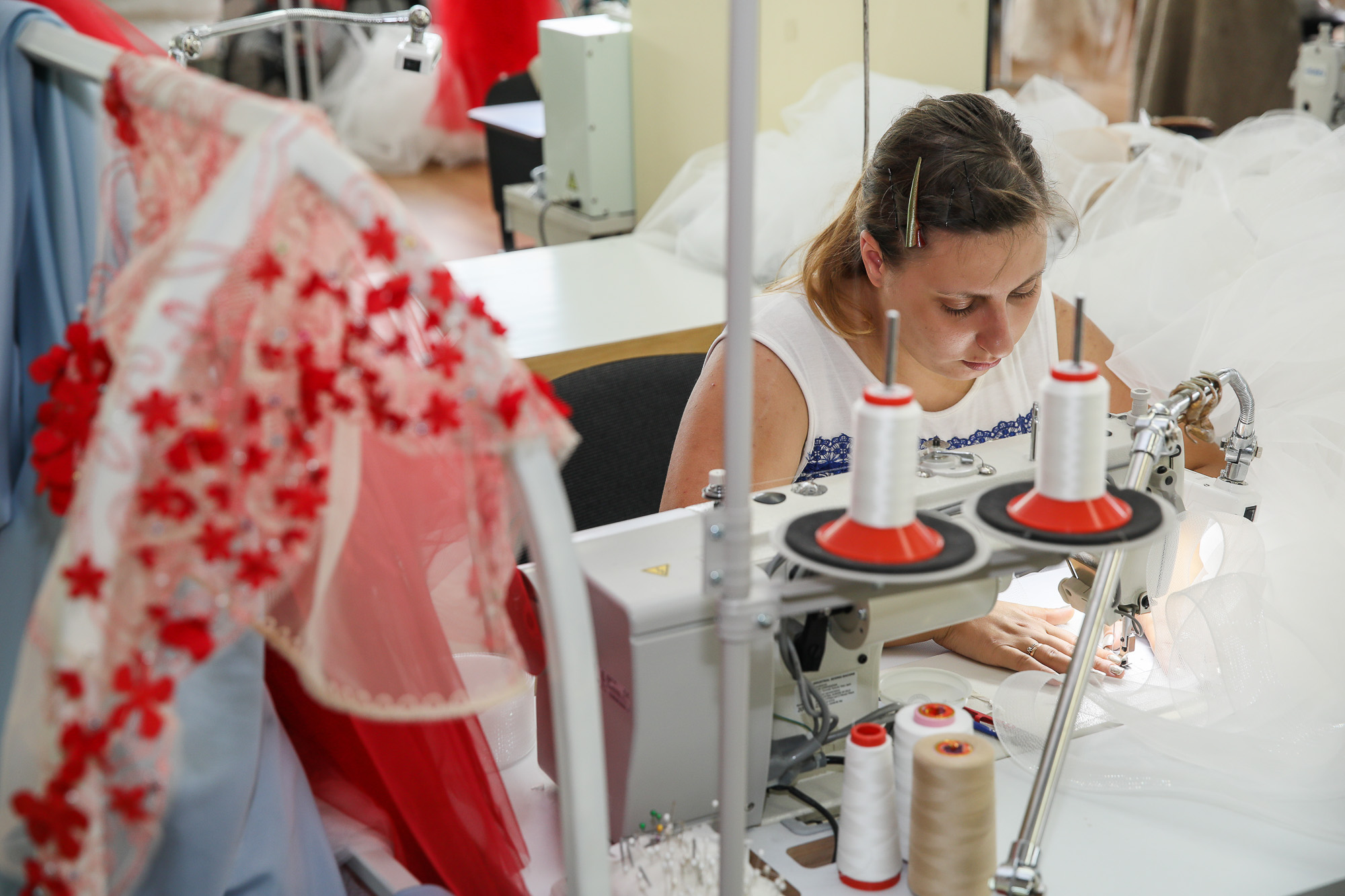Ukraine’s textile industry is gradually regaining momentum after the 2014 EuroMaidan Revolution ousted President Viktor Yanukovych and triggered Russia’s invasion.
Exports reached almost $1.1 billion in 2017, or 13 percent more than in 2016, according to the Ukrainian Association of Light Industry.
JOIN US ON TELEGRAM
Follow our coverage of the war on the @Kyivpost_official.
And Khmelnytskyi is becoming one of the country’s textile business centers.
The city officially has up to 280 sewing plants of different sizes, but the unofficial number might be even twice as high, according to Oleksander Shemchuk, owner of a small sewing plant in Khmelnytskyi as well as vice president of the United Europe Chocen-Khmelnytskyi trade association.
“One 10th of this city is tied to the sewing business employing anywhere between 25,000 to 35,000 people,” said Oleg Demchuk, director at ASTAR agency for sustainable development in Khmelnytskyi.
The dynamic growth of textile business here started due to the high clothing demand in the city. Its local bustling bazaar was formed back in 1987 and now it’s the fourth largest in the country, located in the western part of the city covering 18 hectares.
“In the beginning of the 2000s, clothes were imported from China, and after a while (local businesspeople) decided to make clothes in Khmelnytskyi,” Demchuk said. “So now, they are making everything — from children’s clothes, costumes ending with shoes and underwear.”
However, Shemchuk sees another problem that already appeared on the Ukrainian domestic clothes market — sales are declining as the market saturates. But, there is another option — they can enter foreign markets that demand high quality clothes.
Wedding dresses
Sitting in her stylish modern office, right next to a high-tech sewing plant, it’s hard to believe that only six years ago Marina Vasylieva, 33-year old founder and CEO of Pollardi fashion group, started a wedding dress business with only one employee.
Now she leads the company with a staff of around 500 people making from 2,000 to 3,000 premium wedding dresses per month. And Vasylieva wants more.
“We already opened another sewing plant in the city of Kamyanets-Podilsky, where we already have 50 employees,” Vasylieva said.
In addition, in order to become independent from Ukraine’s customs, Vasylieva recently started her own production of lace textile and doesn’t rely on imports. This ensures that dresses come on time.
“For example, if a bride from Chicago orders a dress, she needs it on time, not a week after the wedding. And our officially ordered container with lace textile cannot stand at customs in Odesa for three months where we can’t do anything about it,” said Vasylieva.
Last month, her company made 5,000 meters of laced textile, and the plan for September is to double the production.
Getting ideas from fashion shows organized by luxury brands Dior and Chanel, she is already planning how the next collection will look like.
Pollardi Fashion Group is now making dresses under four brands — Daria Karlozi, Pollardi, Ida Torez and Liretta. The most expensive is Pollardi — the price of a dress can vary from $1,000–2,000.
After the start of Russia’s war, Vasylieva switched her prevailing exports from Russia to European Union countries and United States. Now most of her dresses are exported to the new markets.
Pollardi Fashion Group also started to export to China after the company participated in a trade exhibition for the first time in China in January.
“Chinese want to buy European clothes, and Pollardi now even replaces some premium Chinese brands,” said Vasylieva.
She says it’s going so successful that she received an offer from a Chinese partner.
“They offered me to transfer my production to China: I wouldn’t have to pay rent for my plant for three years, no tax payments for four years, and 80 percent of my exhibition expenses around the world would be compensated,” she said.
But the young business owner refused the tempting proposition as she wants to conquer the world from Ukraine.
Bembi
Another successful textile company in Khmelnytsky is Bembi.
And unlike the exclusive segment for wedding dresses, Bembi’s children clothing feels strong competition on the local market.
Having a 0.5 percent share of the Ukrainian market in 2017, Bembi entered the top 10 childrenswear companies along with world giants such as Chicco, LC Waikiki, Zara and Adidas, according to Euromonitor International research.
Working since 1998, the company now makes 2.5–3 million items annually, and when it comes to its exports, most of it goes to Belarus and then to Russia and Kazakhstan, according to Valentyn Rubakha, business development director.
“The Russians believe that our clothes are made in Belarus and don’t care about them,” said Rubakha.
However, for the past four years the company started to conquer the EU market as well.
Bembi created an office and warehouse in Warsaw producing clothes that are then exported to Lithuania, Latvia, Estonia, Czech Republic, Slovakia, and even France.
But one of the main problems of switching to the EU market is in the stylistic differences.
“It’s hard to imagine that a Ukrainian mother will wear a baby in a black onesie, and in Holland, for example, it’s absolutely normal,” said Rubakha.
Other unpopular children clothes for EU but high in demand in Ukraine are turtleneck sweaters.
But the main problem for Ukraine’s textile industry to increase exports is the 10 percent duty tax for exporting garments, which the government promised to remove but still hasn’t, says Rubakha.
You can also highlight the text and press Ctrl + Enter


